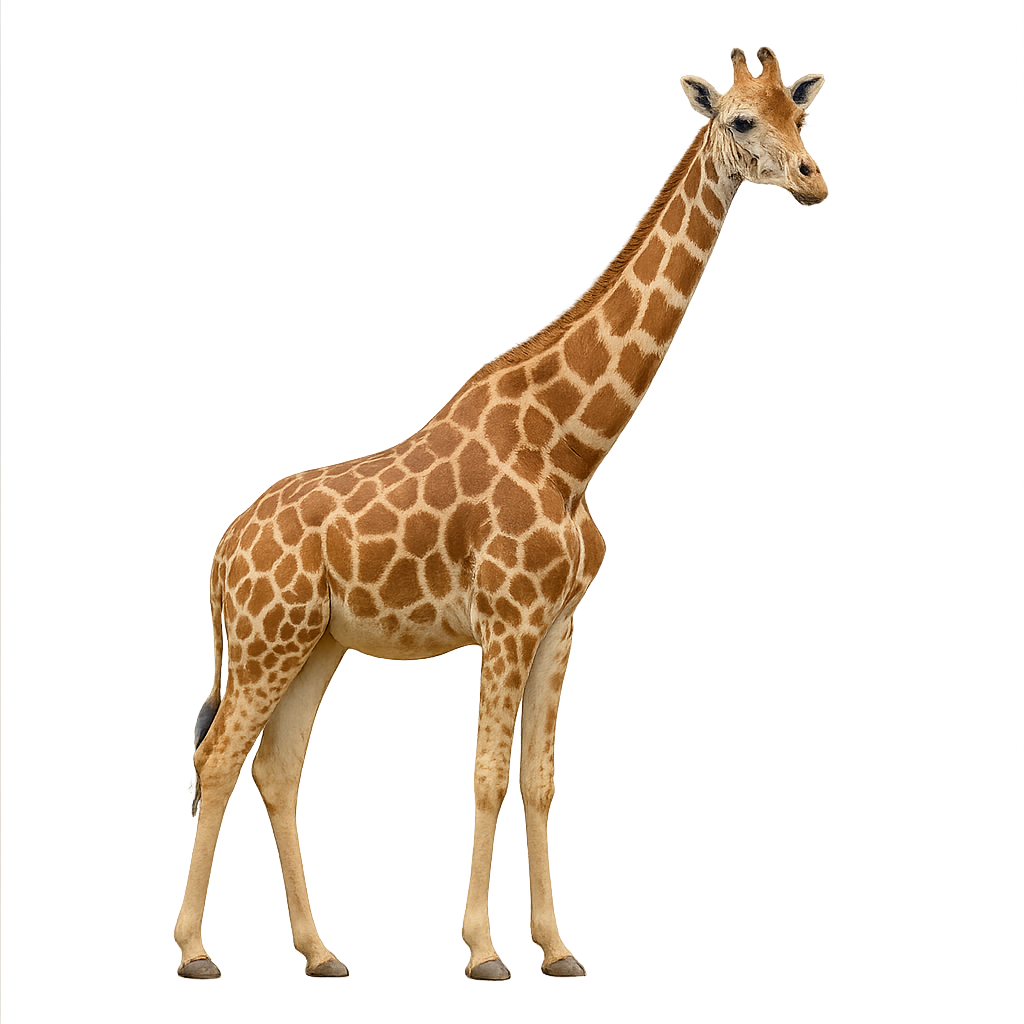Observe and photograph a species in its natural habitat
Learn where and when to observe a species in the wild, how to recognize it in the field, and what habitats it lives in. Get photography tips adapted to its behavior and capture stunning images without disturbing the animal. For full details, open the complete profile in the WildlifePhotographer app.
Nubian Giraffe
Scientific name: Giraffa camelopardalis

IUCN Status: Vulnerable
Family: GIRAFFIDAE
Group: Mammals
Shyness: Suspicious
Safe distance: 110 m
Breeding season / Courtship: 01.01-31.12
Gestation: 15 mois
Births: 01.01-31.12
Habitat:
Savanna and arid zones
Description:
The Northern Giraffe is a subspecies of giraffe, characterized by its slender body and long neck. It stands about 4.5 to 5.5 meters tall, with males being larger and bulkier than females. Northern giraffes weigh between 800 and 1,200 kg. Their coat is light beige with irregular patches of brown or orange, which are smaller and more closely spaced than those of other giraffe subspecies. These patches are outlined in white, creating a distinctive pattern. The Northern Giraffe primarily inhabits the savannas and open woodlands of northern Kenya, particularly in the Samburu National Reserve and surrounding areas. Herbivorous, it feeds mainly on acacia leaves and other tall vegetation, which it reaches with its long neck and prehensile tongue. The Northern Giraffe is an endangered species, due to habitat loss and human conflicts, including poaching and encroachment on its land.
Recommended lens:
>=70-200 mm
Photography tips:
Approach slowly and quietly, using a telephoto lens to photograph from a distance. Although giraffes are large and visible, they can be sensitive to human presence.
Photograph early morning or late afternoon, when soft light highlights their activity—feeding on treetops or moving across savannahs and open woodlands.
Capture natural behavior: grazing, walking in herds, or social interactions all offer great photo opportunities.
Be patient and respectful—keep your distance and avoid disturbing them.
IUCN status: Vulnerable. Respect their habitat and follow local conservation rules.
Ready to take action?
Choose your platform and start your free trial today



